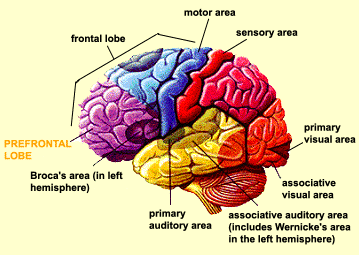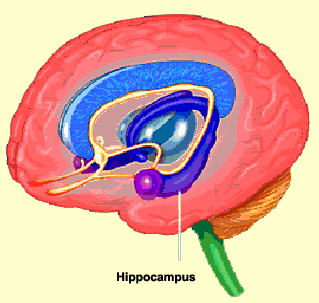SHORT-TERM MEMORY
In the course of a day, there are many times when you need to keep
some piece of information in your head for just a few seconds. Maybe
it is a number that you are “carrying over” to do a subtraction,
or a persuasive argument that you are going to make as soon as the
other person finishes talking. Either way, you are using your short-term
memory.
In fact, those are two very good examples of why you usually hold
information in your short-term memory: to accomplish something
that you have planned to do. Perhaps the most extreme example of
short-term memory is a chess master who can explore several possible
solutions mentally before choosing the one that will lead to checkmate.
 This ability to hold on to a piece of information temporarily
in order to complete a task is specifically human. It causes certain
regions of the brain to become very active, in particular the pre-frontal
lobe.
This ability to hold on to a piece of information temporarily
in order to complete a task is specifically human. It causes certain
regions of the brain to become very active, in particular the pre-frontal
lobe.
This region, at the very
front of the brain, is highly developed in humans. It is
the reason that we have such high, upright foreheads, compared
with the receding foreheads of our cousins the apes. Hence
it is no surprise that the part of the brain that seems most
active during one of the most human of activities is located
precisely in this prefrontal region that is well developed
only in human beings.
Human memory is a complex phenomenon, however, and of course involves
other regions of the brain as well.
LONG-TERM MEMORY
Information is transferred from short-term
memory (also known as working memory) to long-term memory through
the hippocampus, so named because its shape resembles the curved
tail of a seahorse (hippokampos in Greek). The hippocampus is a
very old part of the cortex, evolutionarily, and is located in the
inner fold of the temporal lobe.
 All of the
pieces of information decoded in the various sensory areas
of the cortex converge in the hippocampus, which then sends
them back where they came from. The
hippocampus is a bit like a sorting centre where these new
sensations are compared with previously recorded ones. The
hippocampus also creates associations among an object’s
various properties.
All of the
pieces of information decoded in the various sensory areas
of the cortex converge in the hippocampus, which then sends
them back where they came from. The
hippocampus is a bit like a sorting centre where these new
sensations are compared with previously recorded ones. The
hippocampus also creates associations among an object’s
various properties.
When we remember new facts by repeating
them or by
employing various mnemonic devices, we are actually
passing them through the hippocampus several times. The
hippocampus keeps strengthening the associations among
these new elements until, after a while, it no longer needs
to do so. The cortex will have learned to associate these
various properties itself to reconstruct what we call a
memory.
But the hippocampus
and the cortex are not the only structures involved in long-term
memory and its various
manifestations in the brain.



0 التعليقات:
Post a Comment